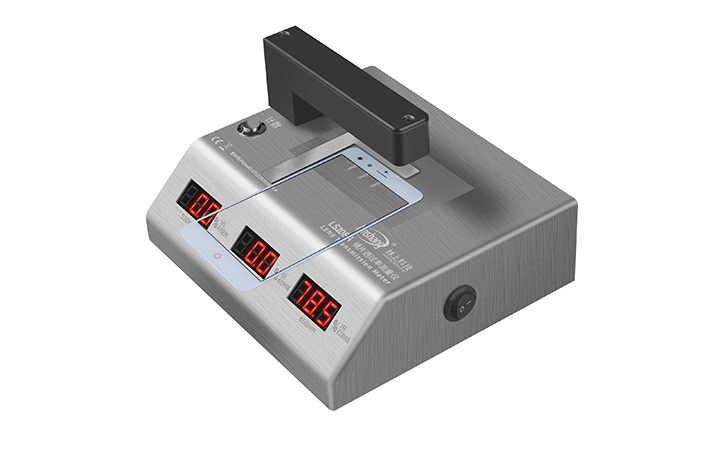Light Transmittance Test of Smartphone Cover IR Ink Hole
The main plane and camera aperture of the smartphone cover, as well as the light and distance sensor apertures all need to be tested for transmittance. We can use the LS108 A Lens Transmission Meter to test the IR and visible light transmittance.
On the cover of the smartphone, there are generally two small holes for the light sensor and the distance sensor. There is also a slightly larger hole for the camera. The infrared penetrating power of the IR ink hole directly affects the performance of the light sensor and the distance sensor of the smartphone. The light sensor can automatically adjust the brightness of the screen, etc. The distance sensor can sense the distance between the phone and the face during the call to achieve the automatic close of the screen, preventing the face from accidentally touching the screen. This indicator of infrared transmittance is very important.
The light transmittance of the main plane of the mobile phone lens and the camera hole all need to be tested. The Linshang IR ink tester LS108A is suitable for lens whose diameter is more than 1mm. It adopts the infrared 850nm light source, 940nm light source and the visible 550nm light source. Professionally used for the transmittance test of the IR hole of the current touch screen smartphone.
Instructions:
1. Power-on self-test: Plug in the power and turn on the power switch of the IR ink tester. First, self-test and self-calibration are performed. After the self-calibration is completed, the display values of all three displays are “100”, indicating that the transmittance is 100% when there is no object under test.
2. When measuring the IR ink tester, align the distance between the lens of the mobile phone and the position sensor hole with the beam hole of the tested band on the meter. The corresponding band display shows the transmittance parameter of the measured object.
- Floor Gloss Meter | Florr Glossiness Measurement
- 9 Point Vacuum Coating Online Light Transmittance Meter for Wuxi Xincheng Company
- Why do We Test Mobile Phone Ink Hole IR Transmittance?
- IR-CUT Filter Transmission Meter Test Camera Filter
- New Method of IR Ink Transmission Meter
- IR Intensity Meter Test Heat Insulation Effect of Automobile Filmed Glass
